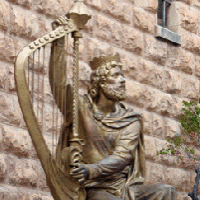![]()
Tuesday, July 12, 2011 | By Jared Feldschreiber
I — Importance of Mediterranean Islands for Ottoman Empire
The Mediterranean islands, particularly Cyprus, proved invaluable to the expansion for the Ottoman Empire. To this day, many islands in the region continue to serve as the gateways for commerce and, specifically Cyprus, for its military strategy in its relation to the Mediterranean Sea. Various historians, like Fernand Braudel, Benjamin Arbel, John Norwich, Andrew Hess and Molly Greene are cogent scholars of the region, who have analyzed the value of the Middle Sea‘s relationship with the Ottoman Empire. Cyprus, which the Ottomans conquered from the Venetians in 1571, provided an added boon to an empire that would grow exponentially after its conquest.
“The Mediterranean is a miracle,” writes Braudel. “Seeing it on the map for the millionth time, we tend to take it for granted; but if water that might have been deliberately designed, like no other in the surface of the globe, as a cradle of cultures… Small wonder, then, that the it also provided the principal means of communication.”[1] This essay looks at the importance of the Mediterranean Sea, focusing on Cyprus in and around the Ottoman Empire, particularly in its infancy and the various organizational methods that they employed within their empire. This essay seeks to display the Ottomans’ methods of setting up organizational powers. This essay also explores how this strategically located Greek Island gave rise to home-grown resources. It also questions whether Braudel’s analysis of the Mediterranean Sea and whether for all of the divisiveness and wars that erupted there, if in fact it was indeed a “miracle.“
The Ottomans were constant competitors with the West, and their conquest of Cyprus provided an added boon to the empire. Its ultimate collapse had much to do with ethnic strife, particularly the simmering religious conflict between Turkish and Greek Cypriots. The rivalry between the Turks and Greeks, exists to this day.[2] Cyprus was hardly the only successful conquest for the Ottomans, but by providing a boon for the empire, it enabled them ironically some degree of legitimization from the Europeans.
II — Ottoman Conquest of Mediterranean Islands
The Ottoman Empire’s conquests throughout the Mediterranean Sea were incredibly diverse and expansive. After their conquest of Constantinople in 1453, the Ottomans went beyond the Eastern Mediterranean. They conquered Rhodes in 1522 after the historic Siege of Rhodes.[3] The Siege of Rhodes ended with an Ottoman victory and became a major step towards Ottoman control and greatly eased their communications between Constantinople and Cairo and the Levantine ports. “The Ottoman dominated Mediterranean that emerged after the war did not look so different than the Venetian order that preceded it.”[4] Other conquests in and around the Mediterranean Sea included Anatolia. They suffered a bitter defeat in Malta in 1565, which thereafter enjoyed rare independent-like status.
The Ottoman Empire built a naval force capable of protecting commercial sea lanes leading to the capital city of the empire. After the conquest of Egypt and Rhodes in early 16th century, the Ottoman Navy expanded its operational range throughout both sides of the Mediterranean Sea. The Ottomans were not interested in consolidating their rule of the insular world of the Aegean at that period as Koteas but were more interested with setting up a litany of fleets.
Other Mediterranean Islands, like Malta, became a seedbed of both piracy and commerce. Malta could be described as “a small, stone island- strategically located between Tunisia and Sicily that separates the eastern and western Mediterranean. It was a rarity since it has maintained independent-like status far beyond the Middle Ages. It was never conquered by the Ottomans; in fact they were forced them out.[5] Malta’s economy came from both piracy, but also from its manufacturing of crops, like cotton and grain. The cotton was shipped to Sicilian ports, which became Malta’s chief cash crop.[6] Malta assumed a strategic importance beyond its size because it lay astride the latitudinal divide.
Historian Andrew Hess argues the Ottoman Empire’s Egyptian conquest of 1517 helped to change the landscape of world history, insofar as shaping the Mediterranean Sea as a maritime and commercial boon for its conquerors. “Merchants who used the sea were settled in the rebuilt city and given relief from taxes in order to encourage trade. They then set up an establishment of an expensive and powerful navy.”[7] The Ottomans would continually enhance the quality of their own naval fleets as the empire grew, aware of the Mediterranean as a vehicle to protect their borders.[8] “The art of the frontiers expressed the sense of the times. The economic yield of the Ottoman expansion resulted in direct financial benefits that served to fuel future military expeditions.”[9] These future military expeditions proved beneficial for the Ottomans, taking their cue from the Venetians, and reaped the benefits of a strategically located island, capitalizing on inherent resources.
Between 1489 and 1570, the Venetians controlled Cyprus. Cyprus during the Venetian rule “was characterized by an impressive rise in the island’s population. Compared with around 100,000 inhabitants at the turn of the 15th Century, the inhabitants must have numbered around 190,000 on the eve of the Ottoman conquest. The dimensions of this among the highest compared to other countries in the Mediterranean region and Western Europe. Following the Ottoman conquest, the island’s population declined drastically.[10] The population’s rise were epitomized by an increase in the number of town dwellers and inhabitants of rural settlements.
There were no big cities in [in Cyprus], but two towns — Nicosia and Famagusta — presented food supply problems. When Cyprus was a Venetian colony, the Italians had to provide for the own countrymen as well for this colony. They were forced to feed an urban population. The number had reached a level similar to that of the entire island of Cyprus. Thus, massive food shortages persisted, which exposed some weakness in which the colonizers were coerced to care for a country that was entirely foreign to them.[11]
The military headquarters of Cyprus was in Famagusta. Nicosia, the capital, was heavily fortified, “a rich city, generously endowed with treasures ecclesiastical and secular, western and Byzantine.”[12] The total population was at about 160,000 and a various mix of Greeks, Venetians, Armenians, Syrians, Copts and Jews. Since Cyprus had neither the means, the ability the will to defend itself, it could be defended only by Venice, the military defense for the country. At yet, “Venice lay 1,500 miles away across the Mediterranean, much which was now controlled by the Turks. They, on the other hand, had only fifty miles to sail from the ports on the southern coast of Anatolia, where they could count on an almost limitless supply of manpower and materials.”[13] So this made the Ottomans grasp on Cyprus much more tangible and they took advantage.
III — Geographical Strategy of a Cyprus Conquest
For the Venetians, before the eventual conquest of Cyprus, the relations with the Ottomans were already complex. After taking hold of Cyprus in 1473, they maintained a long and rich experience of contacts with the Muslim Levant. “The Conquest of Constantinople by the Ottomans brought open war between the republic and the rising Muslim Empire, but this was just a small prelude to the long military struggle in which the powers were involved.”[14] Prior to the Ottomans landing had always been seen primarily as a seedbed for Christianity, before the Ottomans got there, and turning this into the Muslim empire would cause great concern.[15] Cyprus was a Venetian colony, and the city of Venice, which also underwent a spectacular demographic rise during the same period, had to feed an urban population whose number had reached a level similar to that of the entire island of Cyprus.[16]
The Ottomans’ takeover of Cyprus from Venetian rule provided a strong geographical boon for the empire insofar as the naval force would serve as a symbolic state power. These vessels grew stronger over time, and merchants who used the sea were settled in the rebuilt city, given relief from taxes in order to encourage trade. “This open seaway had them invest in the establishment of an expensive and powerful navy.”[17] The significance was securing their ships in an open sea between Egypt and Istanbul. This contributes controlling an important Mediterranean island, like Cyprus, was beneficial for the empire. It provided a needed gateway for commerce and military protection.
Andrew Hess’s seminal article about the Ottoman conquest on Egypt in 1517 underscores how the Mediterranean Sea serves as a link between Ottoman Empire and Europe, essentially like “a Shared World,” as historian Molly Greene titles her book. “The seizure of Syria, Egypt and Arabia not only catapulted the Ottomans in to a position of leadership within the vast Muslim community but it also gave the Istanbul regime resources sufficient to project its power north to the games of Vienna and west to the Straits of Gibraltar.”[18] Following the Ottoman’s conquest of eastern Anatolia, Syria, Egypt and Rhodes, Cyprus became the Ottoman’s focal point for shipping. Thus, Ottoman vessels, near and around Cyprus was increasingly frequent.[19]
A gradual transition took shape, as even Venetian elites served in the new Ottoman administration.[20] The old elite gradually abandoned its links with Venice and the west, and turned inwards, striving for Ottoman legitimization. The Ottoman Empire’s rule of Cyprus was not a drastic change from the Venetians. Like under the Venetians, “the Ottoman gave timars, or land grants, to soldiers so they, and their families would stay there permanently. This was an action of far-reaching importance because the predefined soldiers became the nucleus of the island’s Turkish community.”[21] Many Venetians stayed on the island and were absorbed by the new order, either as timar-holding sipahi or under the cloak of Orthodox clergymen. This development forced these two social groups to coexist, to compromise but also clashed over the division of the power on the island.[22] The increased foreign interest of the island’s raw materials and their production with concentration of the production in the hands of the Cypriot elite led to greater intensification of agriculture. “A large number of mills built in the period may “suggest a real drive toward increased output.” (Hadkianastasis. 78)
IV — Economic Benefits of an Ottoman Cyprus Conquest
The medieval period witnessed a shift in the basic philosophy for building vessels from shell-based to frame-based construction. For most Mediterranean Islands, cotton was the principle export. Thus, piracy and trade were still commonplace throughout the Mediterranean Sea. Over one hundred years prior to the Cyprus conquest in 1571, the Ottomans’ conquest of Constantinople in 1453 cemented their status as an empire on the rise in the Eastern Mediterranean.[23] Their navy also protected key seagoing trade routes, throughout the Mediterranean, Black and Aegean seas.[24] Once the Ottomans became the hegemonic power in the region, taking over most of these islands, the European powers realized “if you can’t beat ‘’em then join ‘em,“ and set up a new alliance with them.[25]
In his article “Cyprus on the Eve of the Ottoman Conquest,” Mediterranean historian Benjamin Arbel concludes that the Ottomans reaped the benefits of what was already on the island: Cypriot crops. Cyprus was already a great salt producer became exported regularly to Syria and Turkey. Another trading movement of regional character was related to Nicosia’s textile industries. They regularly sent cotton cloth from Syria to Cyprus.[26] The Ottoman Empire flourished with consistent production of cotton, silk, and winemaking with cotton being one of the more important exports, “as it came to gradually replace sugar plantations which had flourished in the Frankish and Venetians periods.”[27] Cypriot crops became the ultimate boon for the Ottomans, enabling a way to generate business. The seamless transfer of Venetians to Ottomans (as some in the former had administrative posts) enabled this empire to flourish, all the while gaining trust of European counterparts abroad. This would be short-lived, however.
The economy was mostly dependent on its agriculture [which was] divided upon by “three main geographical areas: “the first and most important is the Mesaoria plain, the island’s bread basket. The second area comprise [d] of the mountains, where the landscape does not allow the wide cultivation of grains, but encourages animal farming and timber related production. The third category consists of area which were assigned to cash crops. The areas surrounding Nicosia, as well as north and west of Limassol became areas where crops aimed at trade, internal and external, flourished.”[28] The Ottoman Cyprus economy may have been a boon for the empire — even as textile industries declined under their reign — but ethnic divisions persisted, particularly between Turkish and Greek Cypriots. This would help lead to strife on the island, and even to an empire‘s dissolution. Yet, to consider that the empire would survive three hundred years (between 1571-1878) as Greeks resented their sovereignty controlled by the Turks, does remains a historical miracle.
V — Identity Within Ottoman Cyprus
While moderate in their disposition toward minorities, the Ottomans were clearly Muslims, and that caused consternation to predominantly Anglo-Saxon White and Euro-Centric traders. “The memory of bloody events of the war of 1570-1571 have probably contributed to an image of a basically antagonistic relationship between Cyprus and the Muslim neighbors during the century of Venetian rule.”[29]
The Ottomans control of Cyprus did not disrupt freedom to practice religion, even if clearly there was a Muslim majority. Christians and Jews were considered Dhimmis — second class citizens — and while able to adhere to their practices, they needed to accept Islam as the dominant religion of the empire. “The sixteenth-century conquests in the Islamic lands and the capture of Cyprus brought many Orthodox Christians and the ancient patriarchates of Jerusalem, Antioch, and Alexandria under Muslim control.”[30]
A part of Cyprus’s lineage remains the Church of Cyprus as the most significant Greek institution. This increased Greek nationalism on the island. “The high clergy of the Church of Cyprus operated as a group of in the oriental despotic framework of the Ottoman state and the Church was elevated to the most powerful political body on the island. The high clergy remained vigilant with regard to the preservation of the existing order and social class in the Ottoman state.”[31] They elected the Archbishop of its Orthodox Church as the local ruler in the framework of the Ottoman administrative logic.[32]
Ethnic divisions often make up the role of all identities, and even splinter most societies. The ethnic strife in Cyprus proved to be no different. The island brought together Greek and Turkish Cypriots, but were divided by the sultans into self-governed religious communities, which is called a millet. This system “allowed a relatively high degree of religious and cultural freedom and tolerated by presence and at the same time tolerated the presence and the distinction between nationalities. The arrangement was completed by the compulsory acceptance on the part of the subjects and adherence to a common political, administrative and financial system, Ottomanism.”[33] By providing the millet system, religious authorities were able to supervise non Muslim minorities. These minorities were not too happy by it. This system reinforced the position of the religious authorities to govern their own non-Muslim minorities. This system reinforced the position of the Orthodox Church and the cohesion of the ethnic Greek population.
Cyprus had distinct Muslim and Christian Greek Orthodox communities. Members of the Greek-speaking elite of the Orthodox millet became the most powerful of the Ottoman merchant class. This set in motion the profound division between Turkish and Greek culture, which resonates even today. The intellectual movement of Neo-Hellenic Enlightenment played a major role in the expansion and the expression of the Greek national ideology.[34]
Greek and Turkish nationalisms had direct bearing on the relations between the Cypriot communities, leading to the 1821 Greek War of Independence. In the modern era Cyprus lives in unrest and uncertainty. The two Cypriot communities always lived “separately in an atmosphere of uneasy peace, while searching for some kind of a federal solution.”[35] During the Ottoman Empire, Cyprus exemplified a Mediterranean island with strategic, military and economic benefits but was dissolved by bitter ethnic divisions: the Turks found it increasingly impossible to control the rising Greek presence on the island. Cyprus was clearly a Greek island before Ottoman rule. The Ottomans permitted the reestablishment of the Greek Orthodox Church, but by the time the feudal system had been abolished; the serfs had been freed, Cyprus would remain ethnically divided.
Historians have long argued that Cyprus fell into economic decline because of the empire’s inherent commercial incompetence, and increasingly European mistrust and disdain for its Muslim nature, even as initially they were largely traders. Geographic factors, like the Atlantic Ocean serve as a good alternative to the Mediterranean Sea as an important gateway for commerce. The dubious moniker “sick man of Europe,“ became emblematic of a fledgling empire. By the time, the rising British Empire gained control of the island in 1878, the writing was already on the wall. After the Ottoman Empire were defeated by the Russians in the Russo-Ottoman Wars of 1877-1878, and the Treaty of San Stephano granted the British Empire Cyprus, Admiral Sir Geoffrey Phillips Hornby, Commander-in Chief of the Mediterranean Fleet “considered the position of Cyprus as [perfect] for a naval station.”[36] He said, “it was chosen as the most desirable location.”
The Ottomans’ economic and strategic control over Cyprus, was certainly beneficial for the empire all the Turkish provinces, perhaps Cyprus was the best governed. Ironically, “Cyprus passed for the most peaceful in the world.”[37] Years earlier, In 1869 , the announcement Suez Canal brought more international attention for other countries. The British Government had an interest on an island for the same reason they had also coveted it as a strategically place within the confines of the Mediterranean Sea. Even as Arbel points out that the Ottomans did not veer too much away from how the Venetians managed Cyprus for instance, in terms of administration and society, the Ottomans’ conquest was not maintained effectively, and by the time the Russians defeated the Ottomans in the Crimean War (followed by successive losses, which culminated by the Russo-Ottoman Wars in 1877-1878, an empire was in marked decline.
In Braudel’s book The Mediterranean, he “devotes a full seven pages, including a full-page map, to his analysis of the rise of the Ottomans down to the conquest of Egypt and Syria in 1516. He ascribes their seemingly effortless rise to regional pre-eminence to three centuries of repeated effort and prolonged conflict and of miracles and describes the emergence of the Ottoman dynasty from the fortunes of war on the troubled frontiers of the Asia minor, a rendezvous for adventures and fanatics.”[38] Thus, the “miracle” of the Mediterranean Sea, and Cyprus’s relationship to it, reflects how complicated organizational powers mix with the divisiveness of religious conflict. The Ottoman Empire’s conquest of Mediterranean islands, like Cyprus, were clearly meant strategic and naval defense. “The diversification of the economic environment in Europe became a catalyst not only for the economic but also for the political and social development of the Ottoman Empire and therefore Cyprus, since the island was a part of the empire for the largest part of the 19th century.”[39]
Ottoman Cyprus is just one example of the highs of conquest and defeat. Cyprus, still a seedbed for ethnic and religious conflict would never escape the divisiveness, which has characterized its complexity until today.
![]()
Notes:
[1] Fernand Braudel. The Mediterranean 17. # Fernand Braudel. The Mediterranean 17. #
[2] Elias Kolovos, “Insularity and Island Society in the Ottoman Context: The Case of the Aegean Island of Andros” Turkica, 39. 49-50
[3] Greene 26.
[4] Greene 27.
[5] Molly Greene “Malta” History of the Ottoman Empire. 357
[6] John M. McManamon. “Maltese Seafaring in Mediaeval and Post Mediaeval-Times” Mediterranean Historical Review 34
[7] Hess, Andrew International Journal of Middle East Studies “The Ottoman Conquest of Egypt (1517) and the Beginning of the Sixteenth-Century World War.” 63
[8] Hess. 67
[9] Hess. 74
[10] Arbel, Benjamin “Cyprus on the Eve of the Ottoman Conquest” Ottoman Cyprus A Collection of Studies on History and Culture: Michalis N. Michael, Matthias Kappler, Eftihios Gavriel. 37.
[11] Arbel. 38
[12] Norwich, John. The Middle Sea A History of the Mediterranean Double Day (First Vintage Books Edition, December 2007). 317.
[13] Norwich. 316
[14] Arbel, 161
[15] Norwich. 167
[16] Arbel. 46
[17] Hess, 63
[18] Hess. 55
[19] Arbel, Benjamin “Venetian Cyprus and the Muslim Levant” p. 165
[20] Hadjiianstis 68
[21] http://en.wikipedia.org/wiki/Cyprus_under_the_Ottoman_Empire
[22] Hadjianastasis. 79
[23] Norwich, 211
[24] “Cyprus: A country Profile” 15
[25] Costantini, Vera “In Search of Lost Prosperity” 53
[26] B. Arbel. “Venetian Cyprus and the Muslim Levant, 1473-1570.” 178
[27] Hadjiianstis, 67
[28] Hadjianastasis. 66
[29] Benjamin Arbel 182
[30] http://www.fountainmagazine.com/article.php?ARTICLEID=84
[31] Michalis N. Michael “An Orthodox Institution of Ottoman Political Authority: The Church of Cyprus” 230
[32] Hadjianastasis, Marios “Cyprus in the Ottoman Empire: Consolidation of the Cypro-Ottoman Elite, 1650-1750” Ottoman Cyprus. 2009. 68
[33] Stefanos P. Papageorgiou, The Genesis of the Greek and Turkish Nationalism in Cyprus, 1878-1914: A Common March at a Different Pace, pp. 58
[34] Papageorgiou, 59
[35] Hadjipavlou-Trigeoris, Maria Cyprus and Lebanon: A Historial Comparative Study in Ethnic Conflict and Outside Interference Cyprus Review. 88
[36] Hill, George. History of Cyprus: Vol. 4 p. 272
[37] Hill. 288
[38] Colin Heywood Fernand Braudel and the Ottomans: the emergence of an Involvement Mediterranean Historical Review. 170
[39] Michael Michalis. Introduction: The Unchanging “Turkish Rule and the Fair Ottoman Administration and the Ottoman Period in the History of Cyprus. 24



 RSS
RSS











The #Mediterranean Sea and Its Relationship to #Cyprus: A Study of a Mediterranean Island to the #Ottoman Empire | http://bit.ly/qMIyuU
The Mediterranean Sea and Its Relationship to Cyprus: A Study of a Mediterranean Island to the Ottom http://fb.me/RuwI1aHr
The Mediterranean Sea and Its Relationship to Cyprus: A Study of a Mediterranean Island to the Ottom http://fb.me/RuwI1aHr
The #Mediterranean Sea and Its Relationship to #Cyprus: A Study of a Mediterranean Island to the #Ottoman Empire | http://bit.ly/qMIyuU